The Panasonic GF-2 Review
By David Babsky
(Note from Steve – I was going to review the GF2 myself but decided against it as when I handled one I felt it was a step backwards from the classic and functional GF1. In an attempt to beat out the Sony NEX-5, Panasonic went backwards in design (IMO) with a smaller form factor and lack of controls. Some will love it, but many do not. The GF-2 uses the same sensor as the GF1 so no real improbements to IQ were made. Just size, simplification and full HD video. It seems to me the GF2 is aimed at a different market than the GF1, which was a true “photographers camera” in my opinion. If choosing today I would take the E-P2 or E-PL2 over the GF2. I hope you enjoy the thoughts of the GF2 from a different perspective, by David Babsky.)
Micro Four Thirds (m4/3) races ahead with new cameras appearing every few months from competitors – or is that ‘colleagues’? – Olympus and Panasonic. (Leica was in the original trio of Four Thirds camera makers, with a variant of the Panasonic L1 sold as the Leica Digilux-3, but seems to have dropped out of micro4/3.)
Rumour says that Panasonic makes the sensor chip used in both Panasonic and Olympus cameras, so it’s no surprise that the new small Olympus E-PL2 and the new small Panasonic GF2 both now shoot at ISO 6400 (up from ISO 3200), and both cameras come with a new style 14-42mm autofocus lens (Panny’s previous kit lens was a slightly bulkier 14-45mm with an image stabilisation On/Off switch).
The BIGGEST difference between Panasonic’s previous ‘EVIL’ (Electronic Viewfinder Interchangeable Lens) compact GF1 and the new compact GF2 is that the mode dial on top of the camera has gone, and most selections can be made by TOUCH on the rear hi-resolution touch-screen display. (The display, as before, is a 3″ 460,000 dot LCD. Olympus have just upgraded the screen on their E-PL2 to 460k from the 230k of their previous E-PL1.) It’s more of a “press-screen” than a touch-screen, and is not as touch-sensitive as, say, an iPod touch or an iPhone. But that means you don’t get accidental choices made without realising you touched it!
Other differences between the previous GF1 and the new GF2 are:
1 – Video goes up from AVCHD-Lite (1280x720p) to smooth, creamy AVCHD Full-HD 1920x1080i
2 – Built-in STEREO mic, instead of mono (but still no external mic socket)
3 – Highest stills ISO now 6400, up from 3200 (but always ‘Auto ISO’ for video)
4 – Camera is slightly smaller (officially 18% smaller)
5 – Menus and shooting activated by touching the screen, as well as normal button squeezes
6 – Focus region/distance selectable by touching the screen
7 – Pop-up tiltable (ceiling-bounce) flash – previous GF1 pop-up flash fires only straight ahead
8 – Image stabilisation constantly ON in new 14-42mm kit lens (previously switchable)
9 – Older *Four Thirds* lenses now AUTOFOCUS, but didn’t/don’t on the GF1
10 – Smaller, lower capacity battery (1010mAh 350 shots, down from 1250mAh 400 shots on GF1)
Think of the GF2 as a Panasonic G2 electronic-viewfinder SLR, but without the built-in viewfinder bump on the top, and with a very compact body, and with *Full HD* video recording.
Quick comparisons between GF2 and OTHER m4/3 (and similar) cameras:
[a] GF2 has (currently) low resolution 230k pixels optional add-on tilting electronic viewfinder; the bulkier SLR-style Panasonic GH1 & GH2 have a built-in HI-RES (1,440k GH1; 1,533k GH2) viewfinder, but GF2 has (like other Pannys) a fairly hi-res 460k rear display screen; Olympus E-PL2 has an optional add-on HI-RES electronic viewfinder, larger Sony APS-C NEX cameras have HIGHER-res 922k rear display screen
[b] GF2 has a 12 megapixel sensor with similar resolution and movie modes to Panny’s SLR-style 12 megapixel GH1, but with the touch-screen facility of the G2 and GH2 SLRs
[c] GF2 has less vivid jpegs than Oly E-PL2 (though GF2 colour can be boosted via menu)
[d] GF2 has touch-screen menu choices & shutter-release, etc; other ‘compact EVIL’ cameras don’t
[e] GF2 has fixed display screen; GH1 & GH2 DSLRs have swivelling touch display ..but the GF1 & GF2 add-on finder tilts through 90º
[f] GF2 has stereo-sound TV-friendly AVCHD FULL-HD 1920x1080i movie shooting besides computer-friendly 1280x720p Motion-jpeg movie shooting (both also on higher-pixel-count SLR-style GH2), manual audio control, but NO external mic input; GH2 SLR has external mic input, but no manual audio control. Olympus E-PL2 has optional slot-in external mic socket
[g] GF2 has no image stabilisation in the camera BODY, but various telephoto lenses have stabilisation built-in
[h] Larger APS-C-sensor Sony NEX models have bigger-than-m4/3 sensor but have no built-in flash, poor menu structure, no standard flash hot shoe, no proper tripod socket, but do have higher resolution 922k display and higher max ISO 12800.
But what do the GF2’s pics look like, and how does the touch-screen (“press-screen”) system compare with using a proper top-mounted mode dial?
_ _ _
These crops are *hand-held* shots (not tripod test rigs in a lab) pretty much as I’d shoot normally, and they’re crops of the distant, dim clock-face at about 12 feet away, at maximum aperture, filling the viewfinder screen, shot with the hefty Lumix 4/3 14-150mm stabilised zoom (of the old Panasonic L1/Leica Digilux-3) to see the difference between jpgs and RAW files from the GF1 and the new GF2, at the GF1’s maximum ISO 3200. Then there are comparisons between the GF2’s ISO 3200 and its new top ISO 6400. And finally that older 4/3 14-150mm is compared with the newer, more compact, lighter Lumix 14-140mm ‘HD’ zoom.
The GF1 ISO 3200 – FROM RAW
The GF2 ISO 3200 FROM RAW
The GF2 ISO 6400 from RAW
The very slightly larger, very slightly heavier, easier-to-grip GF1 gives less-shaken shots than the teenier, lighter GF2. And the pics from the older, bigger, expensive, 4/3 Lumix zoom look a little more contrasty, with more apparent resolution than the newer, smaller, lighter Lumix 14-140 ‘HD’ m4/3 lens. But these are just “off-the-cuff” tests. And this is trying these cameras and lenses at their extremes: hand-held, heavy lenses, maximum apertures, dim light. In normal day-to-day use there’s no really visible differences, except to say that ISO 6400 RAW (on the GF2) is rough, but usable!
_ _ _
Taking your finger off the GF2 shutter button to touch the rear screen and bring up a virtual mode dial is no different from taking your finger off the GF1 shutter button to twist a dial-in shooting mode (Auto, Program, Aperture-priority, Speed-priority, Manual, Scene, etc) ..except that if you KNOW what mode a real, physical dial is in (e.g; ‘P’ for Program) then you know that one click anti-clockwise puts you in Aperture-priority mode, 2 clicks into Speed-priority, and 3 clicks into Manual mode. There’s no similar ‘do-it-by-feel-without-looking’ facility on the GF2 touch screen.
A quick glance down at a proper mode dial before shooting shows which mode you’re in. But a similar letter (P,A,S,M, etc) always shows in red at the top-left of the GF2’s screen, so you do always know which mode the GF2’s in. Touching that letter offers all possible alternatives ..then just touch the one you want – e.g; ‘A’ or ‘P’ – and that can be faster than twisting a physical dial. The GF1 has a self-timer switch on its top panel, and you can instantly see if it’s set. The GF2 offers a self-timer option via a menu, but it doesn’t show a confirmatory icon onscreen if ‘minimum’ icon-display is selected ..in which case there’s no way of knowing whether the delay is on or off till you shoot! Duh!
Older lenses have BETTER compatibility with the GF2 than with previous m4/3 cameras. Even though the battery in the GF2 is smaller, with less capacity than the GF1, the GF2 now supplies power and feedback to the auto-focus system of old Four Thirds lenses. The excellent ‘Leica’ Four Thirds 14-50mm f2.8 (with image stabilisation) doesn’t and didn’t auto-focus on the GF1, and nor did other Four Thirds brands such as Olympus or Sigma – though the very sharp 4/3 Lumix-branded f3.5 14-150mm (equivalent to 28-300mm) does. But the GF2 now provides autofocus with ALL these different brands, not just ‘Lumix’. The newer made-for-m4/3 Lumix 14-140 HD lens (intended for interchangeable-lens m4/3 MOVIE cameras) is lighter, focuses faster and puts less strain and drain on the battery than those older, bigger, heavier, wider-aperture 4/3 lenses. But the Leica-brand 14-50mm – from the old Digilux-3 – does give one extra stop of light, and a softer background, than the newer teeny Lumix 14-45mm (or 14-42mm) f4, so it can be a useful lens to have. And now it works properly with the GF2.
Those old 4/3 Olympus and 4/3 Sigma lenses which do now autofocus on the GF2 give a lot of juddery hunting with the contrast-detection focus system of the GF2 (which the newer Lumix lenses are specifically designed for), so I wouldn’t recommended using those other ‘golden oldies’. And NON-stabilised telephotos (like the Sigma 4/3 55-200mm) are better used with an internally-stabilised Olympus body, than on a non-stabilised Panasonic body. But the old Lumix 14-150mm f3.5 and Leica 14-50mm f2.8 have a particular advantage over other – including the latest – m4/3 lenses: an aperture ring. Set the GF2 to ‘A’ or ‘M’, and you can quickly set the aperture you want by twisting the lens ring with your left hand. Want it wide open? Twist it straight to 2.8; no fiddling with camera dials or choices. And the GF2 (or the GF1, but with only the Lumix 14-150mm f3.5) shows a range of speed settings to match your chosen aperture.
Ergonomics? Buttons and a (single, rear) dial on the GF2 work as options to the touch screen ..because the screen’s switched off – and touch won’t work – when the optional electronic viewfinder’s attached.
The compact ‘EVIL’ GF2’s video now approaches that of the (higher-resolution) 16 megapixel GH2 DSLR by offering 1920x1080i stereo AVCHD – and with manual audio level adjustment! – but it’s still a good way short of the quality of the massive full-frame Canon 5DMkII ..though shooting on a nice bright day, you could intercut GF2 and 5DII footage and not notice very much difference – except for the 5DII’s signature shallow depth of field. (The Voigtländer 25mm f0.95 manual focus lens, shooting video on the GF2, can sometimes bring results fairly close to the shallow d-o-f of the 5DII, but the Voigt 25 is ‘soft’ at wide apertures, and doesn’t have the ‘bite’ of Canon’s wide aperture lenses.)
I praised the GF1 the other month as an “M-nine-and-a-half”; a cheaper, smaller, handier, pocketable version of the Leica M9 when it’s used with Leica glass ..though I was admonished for suggesting (which I didn’t) that it would somehow produce a “Leica file” when used with Leica lenses. Of course it won’t ..especially not in low light.. but it makes a very good Leica ‘substitute’ for a fraction of the money if you’re not severely magnifying or cropping photos. And the same’s true for the GF2.
Panasonic’s great wide-aperture 20mm f1.7 “pancake” lens (behaving as a 40mm f1.7 on the small m4/3 sensor) gives NO purple fringing on the GF2 (or GF1) even at its widest aperture (possibly software-corrected inside the camera, or due to the straight-on horizontal light path from lens to sensor), but Leica’s own 24mm f1.4 ‘Summilux’ does give purple fringing until stopped down to f2.8, after which it’s perfect on the GF2 (and perfect at f2 on the GF1) ..except that its low-light supremacy has thus been lost, and it won’t focus anywhere near as close as Panny’s 20mm pancake. (The Leica 24mm’s closest focus is 0.7 metres/2 feet, Panny 20mm’s closest focus: 0.2 metres/0.6 feet.) The f1.7 aperture of the 20mm pancake gives almost the same depth-of-field as the (equivalent focal length) Leica (or Minolta) 40mm f2 on a Leica M9 ..a great match, and with handy, fast autofocus.
The GF2’s updated ‘Venus engine FHD’ to handle its imaging sensor takes fractionally longer to display a RAW file after shooting than does the GF1 ..which instantly displays the last shot. So the GF2 is more “Leica M9 like” in churning through the data to display a RAW file, whereas the previous GF1 “just does it” without a pause.
Now the big question: would I swap the previous GF1 for the new touch-screen GF2?
For video? ..Yes. The GF2’s video resolution is up at proper HD (1920×1080) and gives “creamy” TV-friendly ‘interlaced’ video, which looks less “stuttery” on a TV screen than supposedly higher-resolution all-data-at-once ‘progressive’ video. (1280x720p, as on the GF1, is still available on the GF2 in M-JPEG computer-friendly format, as well as now Full-HD 1920x1080i in AVCHD format.) Although the GF2 goes up to ISO 6400 in stills mode, it’s set to ‘Auto ISO’ in movie mode, so the camera decides what ISO to use for movies.
For stills, would I swap? ..Probably not. The GF2’s touch-screen menus are NOT trickier or more long-winded to use than the GF1. It DOES offer a (just) usable higher ISO 6400, particularly in RAW rather than jpeg. It now provides autofocus (and manual focus, of course) with old wide-aperture Leica/Lumix 4/3 zooms. But as it’s smaller than the GF1, the ball of my thumb kept inadvertently pushing on the rear four-way keypad, producing involuntary adjustments of mode, white balance, flash settings, etc, which I didn’t want and hadn’t asked for. The very slightly wider body of the older GF1, and its slightly different (and differently-positioned) keypad, doesn’t have that problem. And my left hand, holding and adjusting the lens, obscures its low-light infra-red focusing-aid lamp: shouldn’t that have been noticed when the prototypes were tested?
GF2 PROs (as a stills camera):
o – Higher ISO (6400)
o – TTL bounce flash (direct flash, as GF1, partially obscured by optional wide 7-14mm lens)
o – Better backwards compatibility with aperture-selectable 4/3 lenses
o – Touch-screen focus area selection (not with optional clip-on electronic viewfinder)
o – Slightly faster flash metering than GF1 (double-flash almost unnoticeable, MUCH faster than Leica M9)
CONs (as a stills camera):
! – Accidental operation of keypad!
! – Left hand obstructs low-light focusing-aid
! – Shorter battery life
! – Slightly slower picture replay (RAW only)
It’s a great little interchangeable-lens camera ..rather like a cut-down and massively upgraded Leica Digilux-3 (it even takes the same lenses, with a 4/3-to-m4/3 adaptor, and has the same size sensor, but with more pixels) ..so I’d call it the new Digilux-4! It may best suit people with smaller hands than mine ..though mine are perfectly average.
Its drawbacks are very few ..far, far fewer than I’d expected.. and it certainly APPEARS simpler to use for a novice. It’s a very nice little interchangeable-lens compact camera. But I’m not a novice. So I’d use it for movies (or for the 4/3 Leica 14-50mm f2.8 low-light portrait zoom) but otherwise I’ll stick with the GF1 (the “Leica M9.5”) for stills. Out of 10? Eight-and-a-half ..and I can hardly wait for a HI-RES clip on viewfinder, to match the resolution of the GH2 SLR.
You can buy the GF2 at B&H Photo!
PHOTOS:
GF2 + 14-140mm, and Digilux-3 + 14-150mm lens, with pop-up flashes open
–
Tilt-flash shots
[ad#Adsense Blog Sq Embed Image]

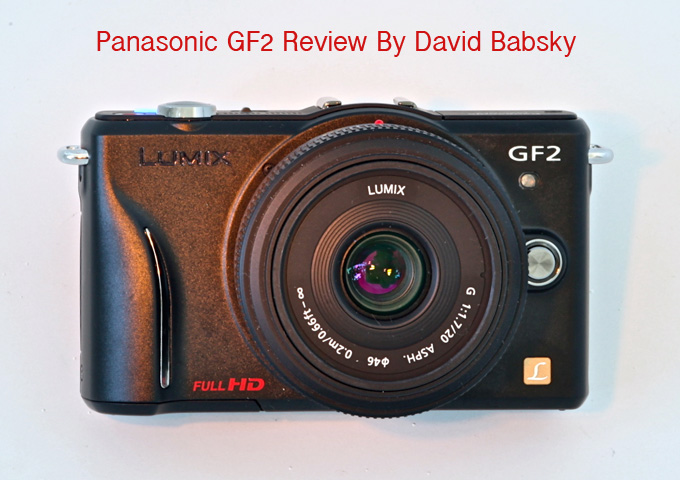
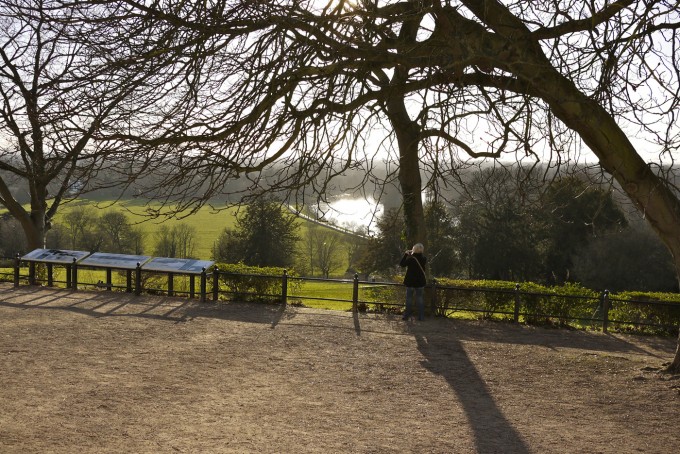

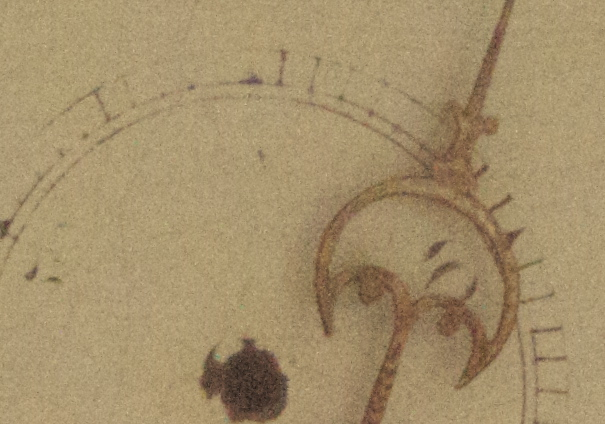
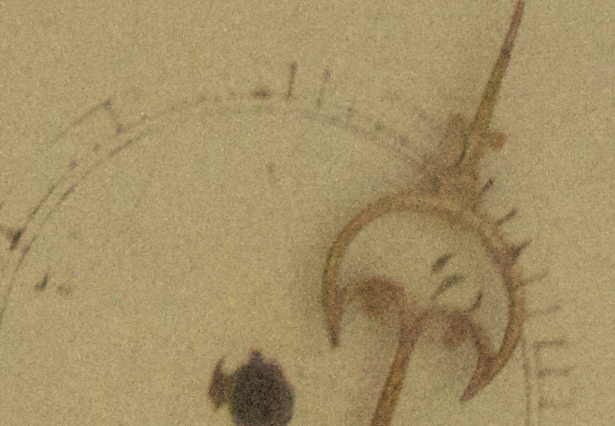
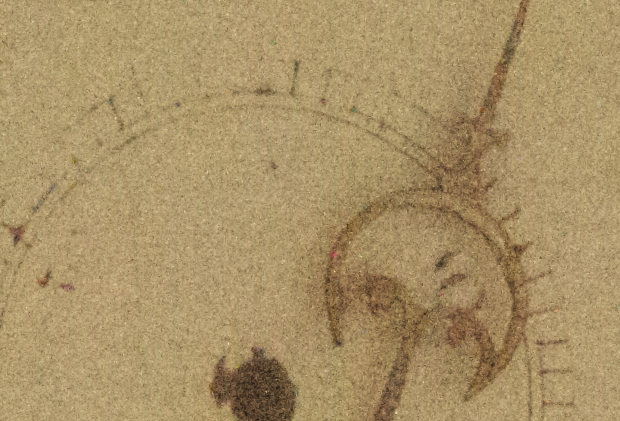

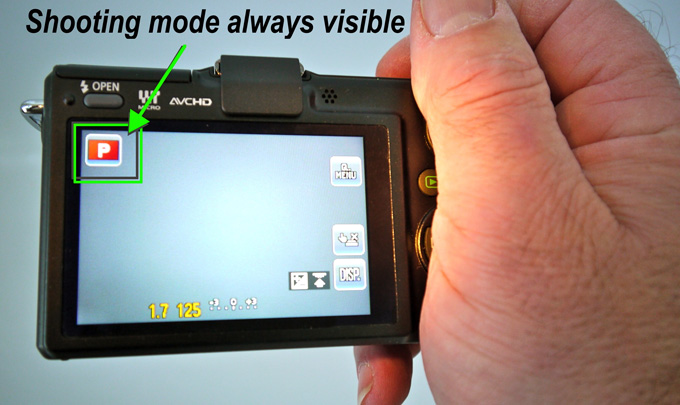
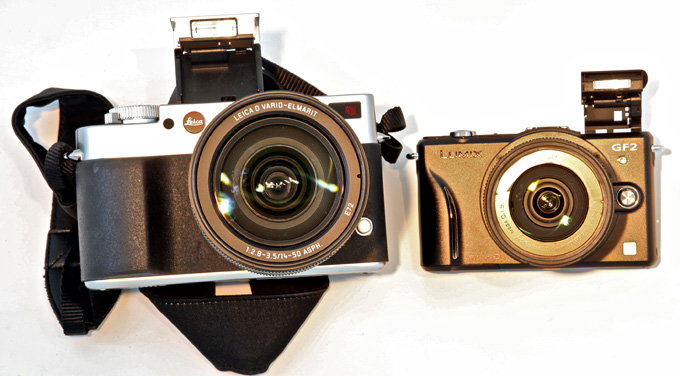
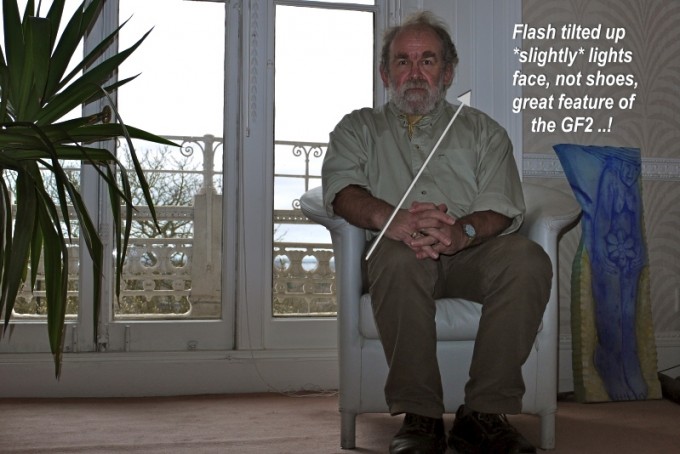
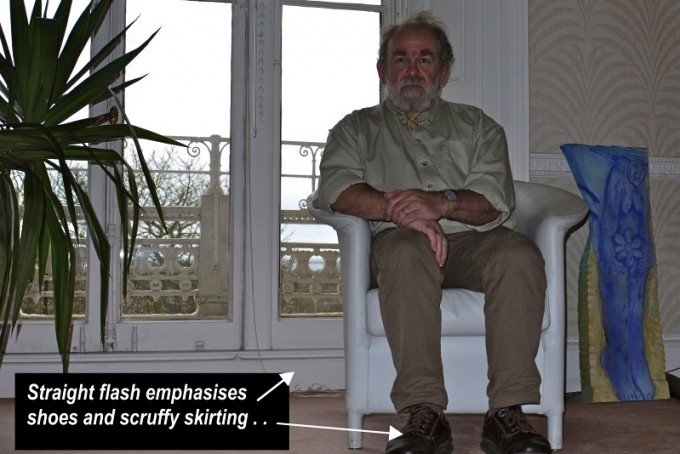
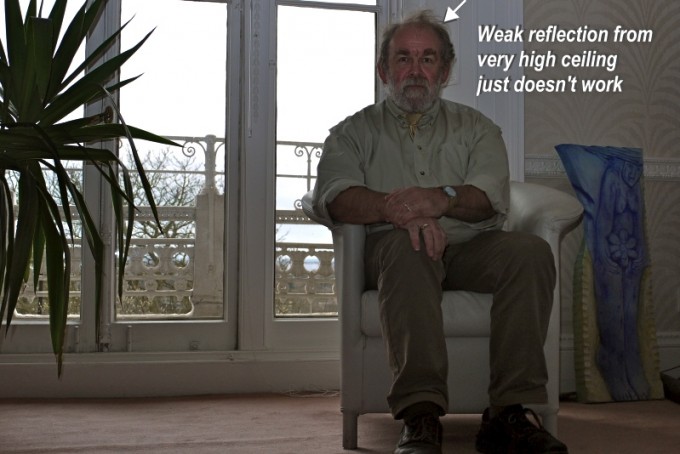

I just bought an GF2, it’s a nice camera… i just want to ask if some can tell me how can turn off the screen to use an optical viewfinder on it, can you turn off the screen when you shoot? Thanks for the help!!
I just bought an gf2 , and don’t know how to set the timer on. I can set the timer to 3 seconds and stuff like those, but how do you activate the timer? Please help, and great review.
Thanks for the nice review. I have been thinking about getting a GF2. However with the introduction of EPL 2, it seems that now most people think that EPL 2 is much better than GF2. But there’s red eye prob for EPL 2 and for video shotting the quality is not very good and there is time limit too. For GF2, seems that the touch screen is not/too sensitive and there is no image stabilizer. Its a very though choice to make. Any advice, which is better for the overall performance after compairing the two?
.
“..It is no use testing wide angle lenses such as the 21 mm on the m43 system..”
Did you mean me, Alain? ..I didn’t mention a 21mm. I said “..Leica’s own *24mm* f1.4 ‘Summilux’ does give purple fringing until stopped down to f2.8..” (on the GF2) ..but at 2.8, or smaller, it’s perfect.
I mentioned that for anyone who already has a 24mm, and thinks they’d like to use that instead of Panasonic’s 20mm, or instead of, perhaps, the Voigtländer m4/3 25mm, or some similar lens.
I’m just trying to give info which may be useful to -e-v-e-r-y-o-n-e-
But thanks for your comments!
Thanks for the review. I’m keeping my GF1 🙂
One little point : It is no use testing wide angle Leica lenses such as the 21 mm on the m43 system : Those lenses are not retrofocus lenses, they are not fit for m43 sensors (the leica M sensors has micro-lenses to correct the problems on the border of the frame with the wide angle lenses). In any case, Panasonic 14mm and 20mm wil give better results on the GF.
Non retrofocus lenses, like the Summicron 50mm give excellent results.
I had a GF1 in the past and recently picked up a GF2 body. I had the same concerns about accidentally hitting the keypad and did so a few times for the first few days I owned it and almost sent it back without a proper trial period. However, after using now for 3 weeks, I have figured out how to hold it without hitting the keypad accidentally and it has just become second nature and not something I have to think about or be concerned with. I would add that I have large hands. I also find the battery to be very adequate. I shoot raw and got shot about 350 images last week and still had one line left on the battery. I did make a point of turning it off aggressively between shots as I wasn’t sure what to expect and I haven’t picked up a spare battery yet.
I do agree with the review that if I had a GF1 already, I am not so sure I’d move to the GF2 except for the video. Having said that, I think the GF2 is a good camera and will be able to hold its own in the long haul. I do like the implementation of the touch screen and coupled with the ability to also operate many of the settings in a traditional button-controlled-manner results in a hybird system that I find very user friendly. Add me to those hoping for a higher end GF3 model, but for now, the GF2 will work for my intended use.
step back from gf1 for sure….., hope they come to there senses and replace this i-camera with a gf3 asap…the thing is a bloody toy!
Oh, and one last gripe – (or wish :).
It would be nice if the EVF was built in – as it can become a pain to take on & off all the time. I’d permanently leave it on, but I fear breaking it by doing so (even with a good bag).
I purchased my GF1 in december knowing the GF2 is coming. Now that the GF2 is here, i’m still happy with my GF1 and I’d do it again!
My kits 4/3 kit consists of: GF1 with EVF, and 20mm/f1.7 and 14mm/f2.5
My grips are small
– the ergonomics the thumb dial and AF/AE lock could be better (a bit close together for my hands)
– wish it had an aperture ring or second front dial (like Nikon)
– wish the EVF was better (like the EP-x one).
– wish it wasn’t focus by wire.
But those are all small gripes. Where it counts in functionality and quality and size, it rocks! I bring it with me everywhere. It should serve me well until I can afford a used digital M.
Cheers,
Nick